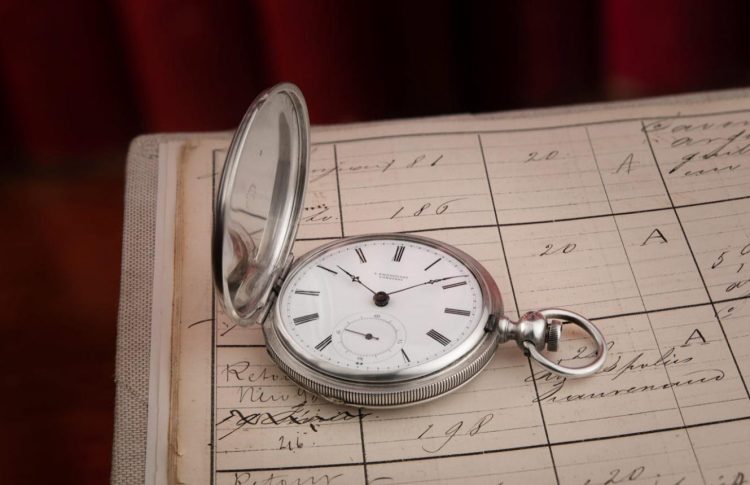Introduction
Longines, one of Switzerland’s oldest and most respected watchmakers, has played a pivotal role in shaping the world of horology for over 180 years. With a rich history of craftsmanship, precision, and innovation, the brand has not only been a driving force in the watchmaking industry but also influenced global watch culture in profound ways. This article delves into Longines’ enduring legacy, examining how the brand’s culture and influence have helped define the standards of luxury watchmaking and left a lasting mark on the industry and enthusiasts worldwide.
1. The Origins of Longines: A Legacy of Swiss Precision
1.1 The Founding of Longines
- Longines was founded in 1832 by Auguste Agassiz in Saint-Imier, Switzerland. The brand’s roots in Swiss watchmaking were established from the outset, as Agassiz sought to create a timepiece that combined the craftsmanship of local artisans with precision engineering.
- The name “Longines” was officially registered in 1867, marking the beginning of a new era for the company and setting the stage for its global recognition.
1.2 Early Innovations and Milestones
- Longines quickly gained recognition for its innovative designs and quality movements. In 1869, the company was awarded its first patent for a chronograph movement, a technology that would go on to shape the brand’s identity.
- Longines was among the first brands to utilize mass production techniques in watchmaking, combining artistry with industrialization to produce high-quality timepieces more efficiently.
2. Longines and Its Role in Sports Timing
2.1 A Long-Standing Relationship with Sports
- One of Longines’ most influential contributions to watch culture is its involvement in sports timing. Since the early 20th century, the brand has been at the forefront of precision timekeeping for a variety of sports.
- Longines was a key partner in the development of timing systems for competitive sports, including horseracing, athletics, and the Olympic Games.
2.2 The Birth of the “Longines Masters” Series
- Longines’ commitment to sports continues today with the “Longines Masters” equestrian event series, which represents the brand’s ongoing investment in both watchmaking and sports culture.
- The partnership with equestrian events further solidified Longines’ reputation for precision and reliability, with the brand’s watches being trusted by athletes, coaches, and enthusiasts worldwide.
2.3 Influence on the Sports Watch Industry
- The collaboration between Longines and various sporting events has significantly shaped the development of sports watches, creating a bridge between functionality, performance, and luxury aesthetics.
- The Longines Conquest collection, designed for sports enthusiasts, features robust and durable timepieces suited to both athletic use and formal occasions, showcasing the brand’s versatility.
3. Longines in Aviation: Precision and Pioneering Spirit
3.1 Longines’ Aviation Heritage
- Longines has a long history in aviation, beginning in the early 20th century when it produced precision timepieces for pilots.
- The company’s close relationship with aviation led to the creation of iconic pilot’s watches such as the Longines Weems series, which was introduced in the 1930s to meet the needs of aviators for precise and reliable timekeeping.
3.2 The Influence on Aviation Watch Design
- The design of Longines’ aviation watches, with their clear dials and precise movements, influenced the broader market of pilot watches.
- Aviation watches from Longines played a role in shaping the modern pilot’s watch genre, incorporating features like large, legible numerals, anti-magnetic properties, and precise chronograph functions.
3.3 The Role of Aviation in Longines’ Identity
- Longines continues to celebrate its aviation heritage with collections like the Longines Spirit and Longines Avigation, which blend traditional aesthetics with modern technology.
- The brand’s deep connection with aviation culture has influenced both enthusiasts and watchmakers, driving the evolution of aviator-inspired timepieces.

4. The Evolution of Longines’ Design Philosophy
4.1 Traditional Elegance Meets Modern Innovation
- Longines has consistently balanced traditional craftsmanship with innovative design, creating timepieces that are both aesthetically timeless and technologically advanced.
- The brand’s design philosophy has evolved from classic, elegant dress watches to more versatile models that cater to a broader audience, including sports, aviation, and diving enthusiasts.
4.2 Longines’ Iconic Collections
- Collections such as the Longines Master Collection, Longines Conquest, and Longines HydroConquest reflect the brand’s dedication to offering diverse designs that cater to different lifestyles.
- These collections have played a significant role in shaping watch culture by establishing trends in design, size, and complications that are now widely imitated.
4.3 The Influence of Longines’ Aesthetic Choices
- Longines’ aesthetic choices, particularly its use of polished stainless steel, elegant dial designs, and refined finishes, have influenced the broader luxury watch market.
- Users and collectors admire the brand for its ability to maintain an air of sophistication while embracing the latest trends in watchmaking, making Longines timepieces versatile and universally appealing.
5. Cultural Impact: Longines as a Symbol of Luxury and Tradition
5.1 Longines’ Influence on Watch Collectors
- Over the decades, Longines has built a loyal following among collectors who appreciate the brand’s commitment to quality, heritage, and design.
- The brand’s watches, such as the Longines Heritage collection, evoke nostalgia while offering modern-day functionality, making them highly coveted in the world of horology.
5.2 Cultural Icon: The Legacy of Longines in Popular Culture
- Longines’ influence extends beyond watchmaking, with its timepieces appearing in films, advertisements, and on the wrists of notable figures in fashion, sport, and entertainment.
- Its status as a luxury brand has made Longines a cultural icon, representing more than just a timekeeping device but a symbol of precision, elegance, and sophistication.
6. Sustainability and Ethical Practices: Longines’ Commitment to the Future
6.1 Longines and Sustainable Watchmaking
- In recent years, Longines has embraced sustainability and ethical practices in its operations. This includes sourcing materials responsibly and reducing the environmental impact of its manufacturing processes.
- The brand has also initiated partnerships with organizations that promote sustainability in the watch industry, further cementing its commitment to environmental and social responsibility.
6.2 The Influence of Sustainability on the Watch Market
- As consumers increasingly prioritize sustainability, Longines’ commitment to ethical practices influences the broader watch industry, encouraging other luxury brands to adopt similar measures.
- Longines’ ability to maintain its luxury appeal while also engaging with contemporary values like sustainability has helped shape the cultural expectations of modern watch buyers.
7. Longines as a Trendsetter in the Watch Industry
7.1 Setting Trends with Innovative Timepieces
- Longines has been a trendsetter in watch design and technology, pioneering new features and movements that have influenced the entire watchmaking industry.
- From introducing the first chronograph to creating timepieces with integrated complications, Longines has consistently led the charge in innovation, setting the stage for future developments in horology.
7.2 Longines’ Influence on the Global Luxury Market
- As one of the most recognizable Swiss watch brands, Longines’ influence on the global luxury market cannot be overstated. Its timepieces serve as a benchmark for other luxury brands, pushing the boundaries of design, technology, and performance.
- The brand’s impact on watch culture is seen not only in the aesthetics of its watches but also in its approach to combining tradition with modernity, an approach that many other brands have emulated.
8. Longines in the Digital Age: Maintaining Heritage in a Changing Market
8.1 Longines and the Rise of Smart Watches
- While Longines has long been associated with traditional analog timepieces, the brand is also embracing the digital age with hybrid smartwatches that combine classic designs with modern technology.
- These hybrid watches, such as the Longines Conquest V.H.P., incorporate digital features like quartz precision and mobile app connectivity, appealing to a younger, tech-savvy audience while retaining the brand’s classic luxury appeal.
8.2 The Future of Longines: Preserving Tradition in a Digital World
- As Longines moves into the future, it faces the challenge of maintaining its traditional values while adapting to a changing market that demands both luxury and innovation.
- The brand’s ability to adapt to the digital age while preserving its rich heritage will be a key factor in its ongoing influence on watch culture and the industry.
Conclusion
Longines’ legacy is not only built on its exceptional craftsmanship and cutting-edge technology but also on its deep cultural influence in the world of horology. From its pioneering role in sports timing and aviation to its status as a symbol of luxury and sophistication, Longines has shaped watch culture for nearly two centuries. As the brand continues to innovate while staying true to its roots, it will undoubtedly remain an influential force in the world of luxury timepieces, inspiring both collectors and watchmakers for generations to come.





































